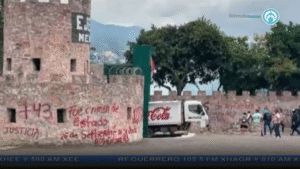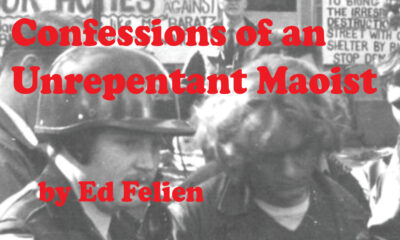 BY JOHNNY HAZARD
BY JOHNNY HAZARD
Younger readers may not be familiar with the normal school concept in the U.S., but my grandmother went to one, Bemidji State Teachers’ College in Minnesota, in the 1920s. In the middle of the 20th Century this teachers’ college and others, like those in St. Cloud and Willmar, were transformed into the state college system and later the state university system.
In Mexico the normal schools were founded shortly after the Revolution of 1910-1917 and studying at one of them or for the priesthood were considered the only tickets out of poverty for rural youth (without selling out your community), especially in the poorest southern states: Chiapas, Oaxaca, and Guerrero. The programs were radical and innovative enough to attract the attention of John Dewey, who visited twice to learn from and to advise the normalistas, as this and other articles in the newspaper La Jornada detail: www.jornada.com.mx/notas/2021/08/20/politica/john-dewey-y-las-normales-rurales/
LaEscuela Normal Rural RaúlIsidro Burgos, commonly known as Ayotzinapa, was founded in 1926 in the small city of Tixtla in the mountainous region of Guerrero. Like the other normal schools, it was opened to meet the demand for teachers that was created by a new policy making education more universally available. When Lázaro Cárdenas became president in 1934, the schools assumed his program of socialist education and some of the schools, including Ayotzinapa, retain this model. Since Cárdenas’ presidential term ended in 1940, all subsequent presidents have reduced funding for the normal schools.
Many books and articles have been written about what happened or may have happened on Sept. 26 and 27, 2014. Students, who had commandeered some intercity buses to get to the annual Dos de Octubre march in Mexico City were attacked by armed thugs who killed six of them immediately and kidnapped the rest. A leading theory is that narcos attacked them because they believed they were rivals or because one of the buses had a cargo of drugs headed for Chicago. Whether or not this is true, it is undeniable that the state—local and state police and the military—was involved. There is overwhelming evidence that the students were taken to a police station in the city of Iguala (to which they had travelled to take the buses) and to a military base. It was no surprise that the president at the time, Enrique Peña Nieto, denied this (as he risked being overthrown by participants in massive protests); it surprised some that the next president, Andrés Manuel López Obrador, also denied it until his last day in office. He insulted grieving and frustrated parents of the disappeared when they insisted on the right to inspect military facilities and otherwise deepen the investigation. In this case, and in others, the president’s desire to be on good terms with the military led him to compromise on progressive principals and on aspects of honesty and human decency. He told parents that his final meetings with them, around a year ago, would have to be without their lawyers and especially without Vidulfo Rosales, lead lawyer and head of a human rights organization in the mountain region of Guerrero. This, on the eve of the tenth anniversary of the incident and with very little advance in the case, was a nightmare scenario.
Parents and other allies have little to show after three meetings with current president Claudia Sheinbaum: no release of military files, no extradition from Israel of Peña Nieto’s top law enforcement official, Tomás Zerón de Lucio. Zerón is not Jewish but he established contacts in Israel as buyer for the Mexican government of Pegasis and other Israeli-made spyware. It remains to be seen what the eleventh anniversary of the atrocity brings in September.
The rural normal schools are also the place where many members of the CNTE (Coordinadora Nacional de Trabajadores de la Educación), the dissident division of the government-controlled mainstream teachers union, studied. It is noteworthy that, while the members of the movement in favor of the 43 disappeared students found Sheinbaum to be more open (initially) to dialogue, the CNTE has had the opposite experience, to a degree that it carried out a 23-day encampment/occupation in the center of Mexico City in recent weeks for the first time since 2016 (before either center-left president had taken office). They initially occupied the Zócalo (the central square), but found that there were enough people to take over about 20 more square blocks. Not enough of the general public thanked them for relieving the area of the usual chaotic automobile traffic. Their principal demand, and the one that Sheinbaum dismisses as “too expensive” is the abrogation of the individual retirement accounts that were implemented in the 1990s and 2000s to replace public pensions. These accounts are modelled more on what Pinochet and Milton Friedman imposed on workers in Chile during the dictatorship than on IRAs in the U.S. Average Mexican workers who have been forced into individual accounts (generally those who started working formally after 2007) will earn less than ten percent of what they would have with a real pension. Sheinbaum, unlike López Obrador, has generally refused to meet personally with representatives of the CNTE and has participated, along with conservative commentators, in accusing the CNTE of “vandalism” and “obstruction of traffic” (as if Catholic processions didn’t cause more problems of this nature and with no social purpose). She has insulted the teachers by trying to buy their loyalty with things like a one-week extension of summer vacations. The teachers, unfortunately, have not been able to attract as much popular support as they did in 2006, especially in Oaxaca, or as U.S. teachers have done in Chicago, Seattle, Minneapolis, Los Angeles, and other cities where they have won strikes.






















